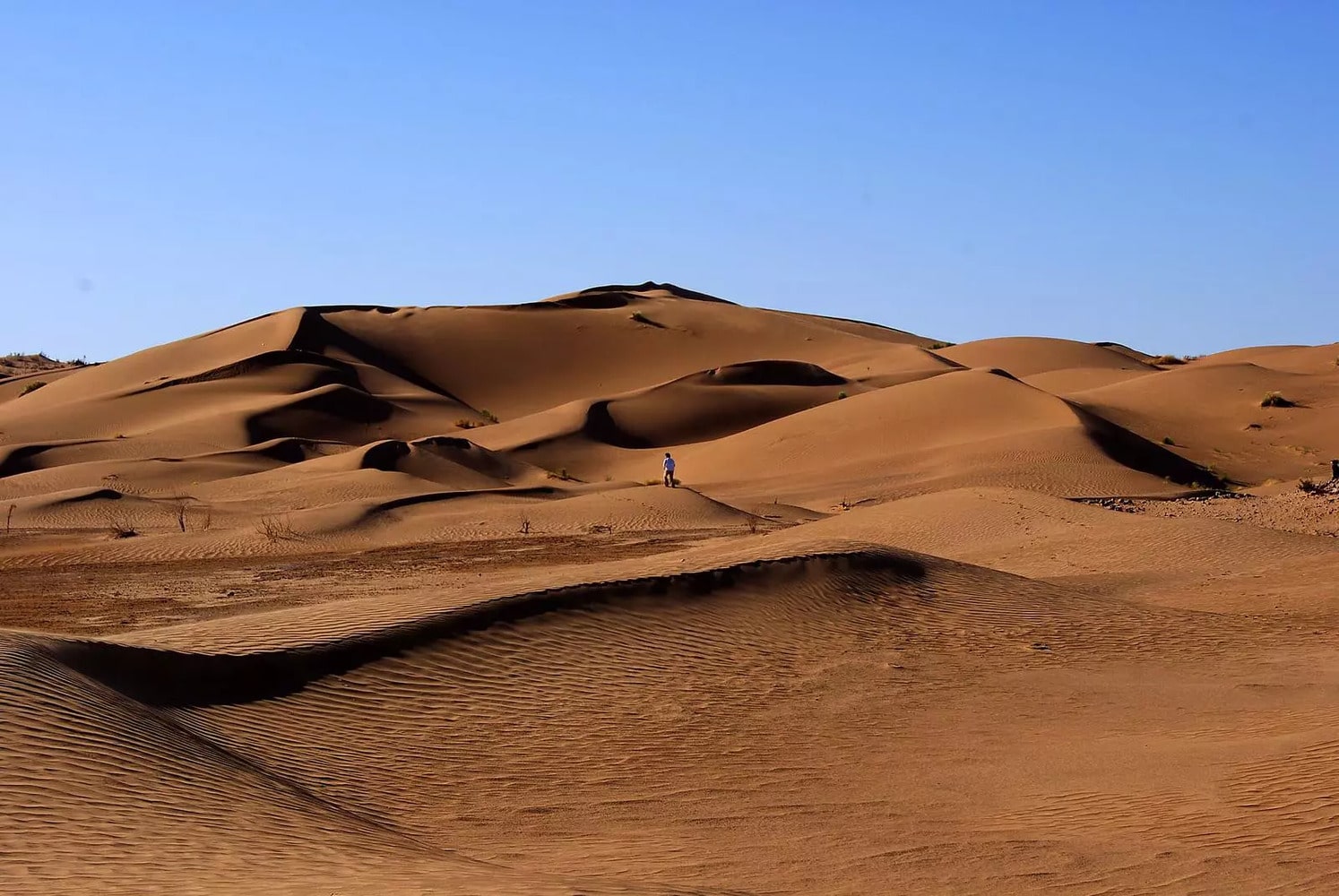The Karakum Desert is one of the largest deserts in Asia, located almost entirely within the borders of Turkmenistan. Its name means “black sands,” although the desert is mostly covered with pale yellow or golden dunes. This vast arid region is remarkable not only for its harsh climate but also for its unique biodiversity, cultural traditions, and historical significance. The Karakum is more than just an expanse of sand and heat—it is a place of natural wonders, scientific value, and enduring human resilience. Here are some interesting and educational facts about this extraordinary desert.
- The Karakum Desert covers an area of approximately 350,000 square kilometers. It occupies more than 70 percent of Turkmenistan’s total land area. This makes it one of the largest deserts in the Eurasian continent.
- Although the name Karakum translates as “black sands,” most of the desert’s surface consists of light-colored or yellowish sand. The name likely originated from the presence of dark clay soils and salt flats that once dominated the landscape. It may also refer to the optical effect of shadows during sunset.
- The Karakum is one of the driest deserts in the world. Average annual precipitation is less than 150 millimeters. In some parts of the desert, it may not rain for several consecutive years.
- Temperature fluctuations in the desert are extreme. In summer, the temperature can exceed 50 degrees Celsius, while in winter it can drop to minus 20. These conditions make life in the desert particularly challenging.
- More than 300 plant species grow in the Karakum, many of which are endemic to the region. Notable examples include saxaul trees, saltworts, and drought-resistant grasses. These plants have developed special adaptations to survive in saline and water-scarce environments.
- The desert is home to a wide variety of animal species. You can find wild sheep, corsac foxes, jerboas, sand vipers, and numerous bird species. Some of these animals are found nowhere else in the world.
- The Karakum Canal, one of the longest irrigation canals in the world, runs through the desert. It stretches for over 1,300 kilometers and transports water from the Amu Darya River to arid areas of Turkmenistan. The canal enables agriculture and provides drinking water to many communities.
- In the center of the desert lies the famous Darvaza gas crater, often called the “Door to Hell.” It was formed in 1971 during a drilling accident and has been burning continuously ever since. At night, the glowing crater creates a stunning and surreal sight.
- The Karakum has a rich archaeological heritage. In ancient times, the Silk Road passed through this region, linking East and West. Remains of ancient settlements, pottery, and fortifications are still being discovered in the area.
- Local people have traditionally lived in yurts—portable, collapsible tents ideal for nomadic life. These structures allow quick relocation in search of water and pastures. Some communities still maintain this way of life today.
- In the 20th century, Soviet authorities implemented massive irrigation projects across the Karakum. Excessive water use contributed to one of the world’s worst ecological disasters—the shrinking of the Aral Sea. This case is often cited as an example of human mismanagement of natural resources.
- The Karakum is not a uniform expanse of sand but a diverse landscape with dunes, rocky plateaus, salt flats, and fertile oases. Some dunes reach over 50 meters in height. In certain oases, crops such as cotton, fruits, and vegetables are cultivated.
- Sandstorms are common in the desert and can last for several days. High winds transport massive amounts of sand, making travel difficult and accelerating soil erosion. Local people traditionally protect themselves with scarves and head coverings.
- The desert includes protected natural areas and reserves where rare species of plants and animals are preserved. One notable example is the Badkhyz Nature Reserve, located near the desert. Scientists conduct climate and biodiversity research in these zones.
- In recent years, the Karakum has become an emerging destination for ecotourism. Visitors come to see the burning gas crater, explore sand dunes, and experience nomadic culture. Tourism is developing with an emphasis on environmental sustainability.
The Karakum is not just a harsh and lifeless environment. These fascinating facts reveal the richness of nature, history, and tradition hidden in this vast desert. You may not have known that a desert can be a place of life, science, and inspiration. Understanding this offers a new perspective on the unique landscapes of Central Asia.





